Long Island City is made up of more than converted factories and warehouses, elevated-train platforms, and a sprinkling of gleaming glass towers. Its landmarks include 19th-century row homes, what might be one of the city’s most beautiful firehouses, the tallest building in New York State outside of Manhattan, and a neon advertising sign. The walking tour below takes us past all of these, and more.
Fire Engine Company No. 258
10-40 47th Avenue (between Vernon Boulevard and 11th Street)
With its stepped gables, bay windows with decorative surrounds, and ornamental panels, this limestone, granite, and brick firehouse would be a notable building anywhere. But flanked by a nondescript two-story house on one side and an equally plain apartment building on the other, it truly stands out. Built in the first several years of the 20th century, it was designed by Bradford Lee Gilbert in the Dutch Renaissance style, perhaps as a nod to the Dutch settlers of the 17th century. Gilbert is best known as the architect of what was considered the city’s first skyscraper, the Tower Building at 50 Broadway, which was destroyed in 1914.
U.S. Post Office-Long Island City
46-02 21st Street (at 46th Avenue)
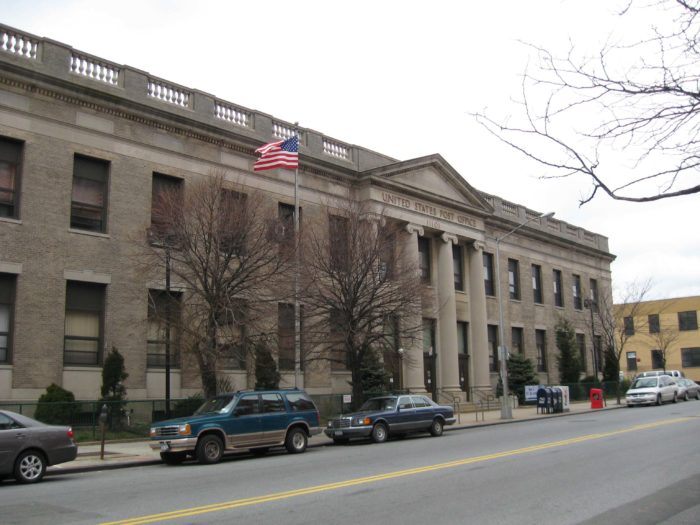
Long Island City Post Office. Image: Jim.henderson/Wikimedia
Just a few blocks from the firehouse, the LIC branch of the Post Office takes up the entire western side of 21st Street between 46th Avenue and 46th Road. Built in 1928, it appears to be much older, thanks to the four Ionic columns marking the entrance and other Colonial Revival features.
Long Island City Courthouse
2510 Court Square West (off Jackson Avenue)
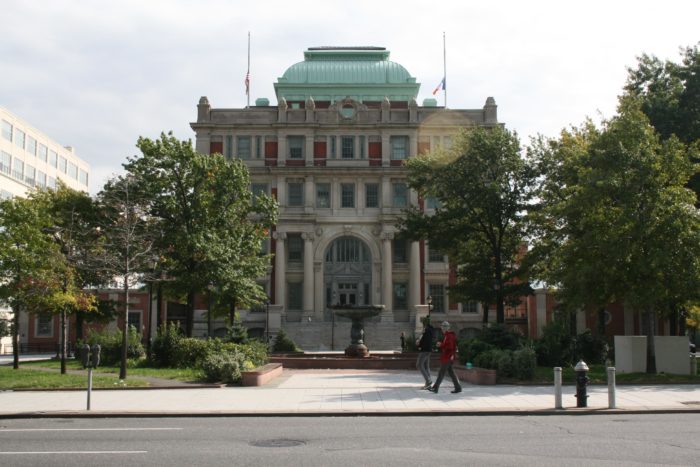
Long Island City Courthouse. Image: Wikist_aces/Wikimedia
Also known as the New York State Supreme Court Building, this four-story building is perhaps the most ornate in all of Long Island City. It was built as a two-story structure in 1874, to serve as the county seat of Queens, back when LIC was still an independent city that included Astoria and Nassau County was part of Queens. After a fire destroyed part of the building in 1904, it was renovated and the top two stories added. Ionic columns topped with scrolls surround the two-story-high entrance, and the red brick is lavishly complemented with granite, limestone, and ceramic. In an “only in New York” bit of irony, Peter Coco, the architect responsible for the overhaul, was tried and convicted of grand larceny in 1910 in this very courthouse. He was one of 14 people indicted for corruption due to charging the government for unnecessary work and materials and skimming the proceeds.
Chase Manhattan Bank Building
29-27 41st Avenue (at Queens Plaza North)
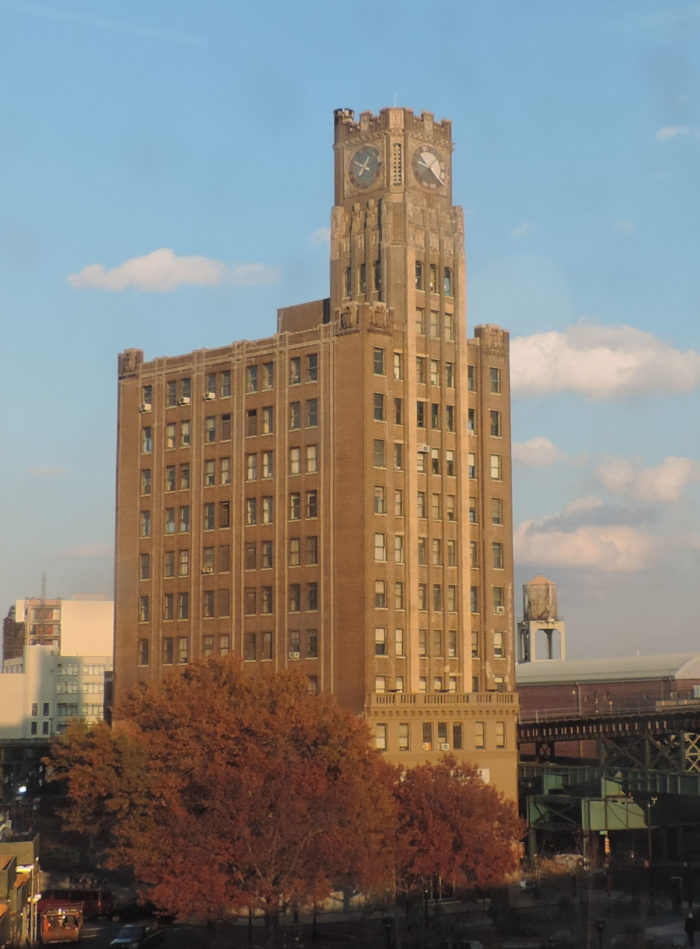
The Queens Clock Tower. Image: Jim.henderson/Wikimedia
When it was completed in 1927, as the Bank of the Manhattan Company Building, this 14-story building was the tallest in Queens, and it remained so until the construction of One Court Square in 1990. Though the brown-brick building with its vertical strips of limestone trim is handsome, it is the three-story clock tower that made this structure a landmark, figuratively and, in 2015, a literal New York City Landmark. In fact, the building is perhaps best known as the Queens Clock Tower. Each of the four clock faces is roughly four feet wide, and the gargoyles, shields, and crenellated roof give the tower the majesty of a medieval castle.
One Court Square
44th Drive between 23rd Street and Jackson Avenue
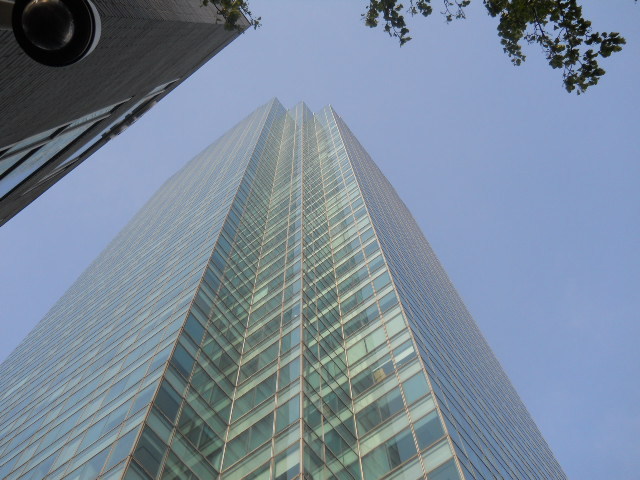
One Court Square. Image: Youngking11/Wikimedia
Better known as the Citigroup Building (not to be confused with Citigroup Center on 53rd Street in Manhattan), this glass-wrapped 50-story tower is not only the tallest building in Queens, but it is also the tallest building in the state outside of Manhattan. The construction of the tower in 1990 is often considered a turning point in the evolution of Long Island City from overlooked outer-borough neighborhood to desirable destination.
Hunters Point Historic District
45th Avenue between 21st and 23rdd Streets
Though it is less than a five-minute walk from One Court Square, the Hunters Point Historic District is well over a century removed. Calling this a “district” seems a bit lofty, seeing as it consists of one block, but the “historic” is apt. The row houses that line the block, some red brick and others stone, were built in the 1870s and ‘80s, in styles that include Italianate and Neo-Grecian. Among the residents of this block in the 1880s was Patrick “Battle-Axe” Gleason, the last mayor of LIC before it was subsumed into New York City. Gleason earned his nickname when in 1888, during his tenure as mayor, he used an ax to destroy a fence erected by the Long Island Railroad on what is now Second Street. During the five days Gleason subsequently spent in jail, his supporters brought him home-cooked meals and even champagne—and he won reelection in 1890.
Pepsi-Cola Sign
4610 Center Boulevard (off 46th Avenue)
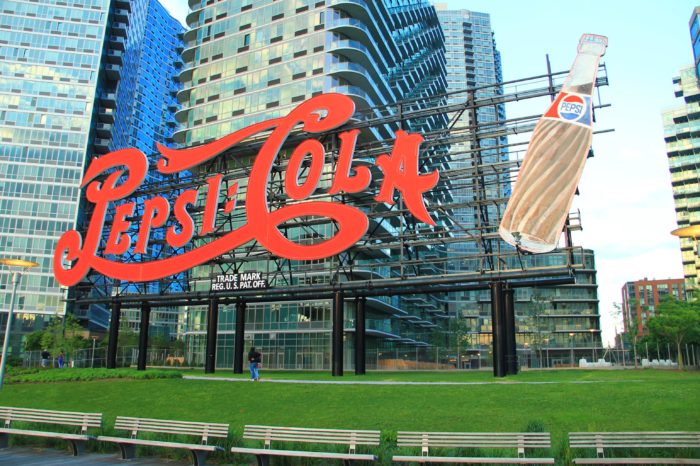
The iconic Pepsi-Cola sign. Image: Gabe Shore/Flickr
Gantry Plaza State Park may be an unlikely locale for a 50-foot-high neon sign advertising Pepsi. But before this part of the waterfront became parkland, it was home to a Pepsi bottling plant; the sign stood on top of the building from 1936 until the plant closed in 1999. By then the 147-foot-wide sign, with its swirling red letters and jumbo Pepsi bottle, had become an icon of the city—and of Pepsi, of course. When PepsiCo sold its LIC property to Gantry Plaza, it retained the 200-foot-wide parcel of land on which the sign stands today.
New York Architecture Terra Cotta Works Building
42-16 Vernon Boulevard (by the Queensboro Bridge)
As a terra-cotta plaque on the facade proudly states, this two-story brick building was built in 1892. It served as the headquarters of the company that provided architectural terra cotta for Carnegie Hall, among numerous other structures. The semicircular bay in the center is just one reason this long-abandoned building continues to delight those who come across it. Others include the terra-cotta lintels, windowsills, and other adornments and the three chimney flues topped with Tudor Revival pots made of—no surprises here—terra cotta. The building is all the more charming for standing just feet from the Queensboro Bridge.








